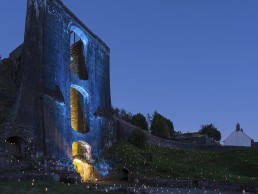
Report finds ‘human factor’ important in LED use
(UK) – Commissioned by Society of Light and Lighting, Public Health England report provides data on positive and negative effects of exposure to light from LED light sources.
A report into the human responses to LED lighting solutions has concluded that the human reaction to light sources should be a primary factor in deciding to deploy them, not just efficiency or cost.
Commissioned by the Society of Light and Lighting (SLL), part of the Chartered Institution of Building Services Engineers (CIBSE), and produced by Public Health England, the report was intended to provide data on the positive and negative effects of exposure to light from LED light sources.
The report found that LED solutions are valid energy efficient options in comparison to other available light sources, with stated performance that is generally accurate in comparison, and that none of the LEDs tested presented a risk of retinal damage with proper use.
The report also concluded that designers should consider the LED as part of the whole light fixture and the environment in which it is used to determine if it is suitable – a factor that is as important as the price of the LED or its efficiency.
Jeff Shaw, President-elect of the Society of Light and Lighting, said: “This report is a valuable collection of data that will be extremely useful in enabling both the public and private sector to make informed choices when looking to procure LED lighting solutions and promote energy efficiency.
“LED technology has advanced enormously in the last decade, but there are still a lot of things to consider when deciding which solution is best for you, and how to deliver it. What this report highlights is the need to consult a properly trained and qualified designer or engineer using the latest guidance to get the most out of an LED solution, and to ensure it is the best choice for people and the environment.”
Cost was shown to have no significant impact on the flicker or colour rendering of the lamp, but there are potential issues surrounding LED lights which must be factored in when deciding where they should be used, and what kind of fixture is most appropriate for them.
For example, around half of domestic and office LEDs were found to have higher flicker rates than alternative sources, meaning that they imperceptibly or noticeably flicker more. This must be taken into account by designers, who should choose LEDs with lower flicker rates, or avoid using them in public places where they may contribute to adverse health symptoms in a very small number of those regularly exposed. Those in procurement need to be very careful to include low flicker requirements in their specifications, and all specifiers need to be aware that if LED products are substituted by contractors or suppliers then flicker needs to be considered.
Similarly, other studies have shown that blue light can mimic daylight and confuse the brains of humans and animals into delaying melatonin production, potentially disrupting the sleep and the circadian cycle. The report concludes that designers should therefore avoid LEDs with a high Correlated Colour Temperature (CCT). LEDs in streetlights should be diffused or recessed to reduce dazzle.
LED technology is advancing rapidly and LEDs are being used for lighting in an increasingly wide variety of situations. Energy efficiency data are favourable, but there is a lack of data relating to the effects on health and lighting quality of the current generation of LED lighting solutions. This report seeks to directly address the areas where data are lacking based on up to date knowledge of human responses to light, and international exposure guidelines, applied to measurements taken of a range of LED lighting products currently on sale to the public, businesses and commissioners of outdoor lighting projects in the UK.
The full report is available to download free of charge from the CIBSE website (Human responses to lighting based on LED lighting solutions) Commissioned by the Chartered Institution of Building Services Engineers and the Society of Light and Lighting.



